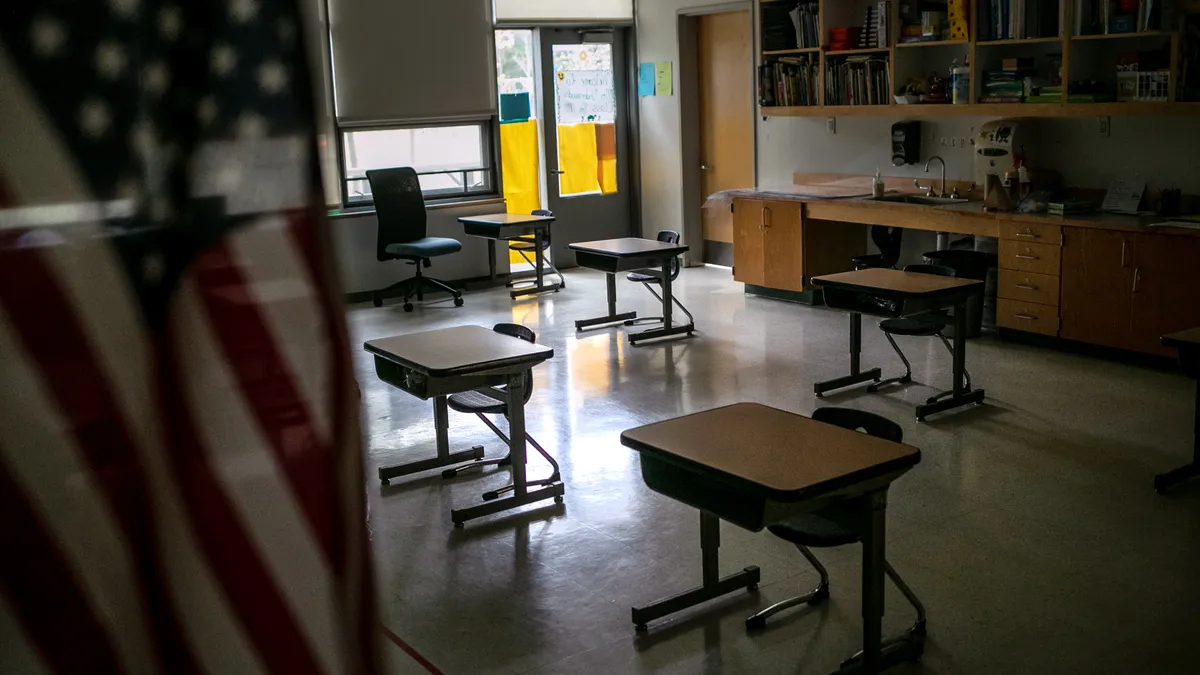Dive Brief:
-
Over the last year, the U.S. Department of Education has made progress in key priority areas identified by the Government Accountability Office, including raised awareness of the dangers of lead in drinking water in K-12 facilities and improved cybersecurity management, according to a GAO report released publicly Wednesday.
-
Priority areas still in need of attention include: helping states give accurate information about the rights of students with disabilities when they are parentally placed in a private school; improving data quality problems regarding instances of restraint and seclusion; and the collection and public reporting of districts’ use of federal COVID-19 relief dollars, according to the nine-page report.
-
The GAO, a non-partisan government research service, has made a total of 80 higher education and Pre-K-12 recommendations for the Department of Education over the last few years, and has suggested department operations can be improved by fully implementing the recommendations.
Dive Insight:
As district and state education agencies plan to obligate and spend nearly $200 billion in COVID-19 relief funding, the Department of Education should consider including obligations data in its annual report on education local and state education spending, the GAO said. That change, the organization suggests, could better reflect the anticipated gaps between when a district commits to using the funds and when they are actually recorded as spent.
“The [Department of Education] agreed with this recommendation and plans to collaborate with states to develop reporting processes that provide greater clarity on state and school district spending,” the GAO letter said.
Each year, GAO makes more than 1,000 recommendations across various federal government agencies and offices. Making the suggested improvements to priority areas has cost savings potential, may reduce waste and can ensure programs comply with relevant laws, the office said.
As of November 2020, the Department of Education’s recommendation implementation rate for recommendations made four years ago was 77% — the same average that recommendations were implemented government-wide.
Since April 2020, the Education Department has improved the threat of lead in school drinking water by collaborating with the Environmental Protection Agency to encourage testing in schools, provided information online and through a mobile app, and instructed school safety officials on incorporating lead testing and remediation into school emergency planning, according to GAO.
Over the past year, the department has also updated its cyber risk management framework to include key elements of a cybersecurity risk management strategy, including a statement of risk tolerance and acceptable risk response strategies. These changes led to a better organization-wide understanding of acceptable risk levels and appropriate risk response strategies to protect systems and data, the GAO report said.







 Dive Awards
Dive Awards





